Polydrug use—mixing multiple substances—is a dangerous and often complicated behavior that can lead to severe physical, emotional, and psychological consequences. Whether it’s alcohol combined with prescription drugs or recreational drugs taken together, polydrug use significantly increases the health risks involved.
For anyone struggling or watching a loved one battle with this, the road to recovery is not an easy one, but it’s possible. Here we will dive deep into what polydrug use really means, the dangers it poses, and how rehab can offer an effective pathway to a healthier, drug-free life.
What is Polydrug Use?
Polydrug use occurs when a person consumes two or more substances simultaneously or within a short period of time. This could include mixing alcohol with prescription medication or hard drugs like cocaine and heroin. People may use multiple substances to intensify the experience, self-medicate underlying issues, or recreationally experiment—sometimes unknowingly engaging in risky combinations.
While it might sound harmless at first glance, the interactions between drugs amplify the risks dramatically, often leading to physical complications, mental health challenges, or even fatal overdoses.
Common Combinations Seen in Polydrug Use:
- Alcohol and Benzodiazepines (e.g., Xanax)
- Cocaine and Heroin (Speedballing)
- Alcohol and Opioids
- Prescription Drugs and Recreational Substances
Each combination carries unique risks, making polydrug use particularly challenging to manage.
The Risks of Polydrug Use
Mixing substances can alter how your body processes them, leading to increased toxicity or compromised effectiveness. The effects of polydrug use extend beyond just your body’s reaction—they also affect your mental health and relationships.
Acute Risks:
- Overdose and respiratory failure
- Cardiovascular issues like heart attack or stroke
- Unpredictable or heightened side effects
Long-term Risks:
- Liver and kidney damage
- Addiction and dependency
- Severe mental health disorders, including anxiety and depression
Polydrug use often masks underlying psychological challenges. Addressing the root causes is crucial, and this is where professional rehabilitation programs make a significant impact.
How Rehab Helps Break the Cycle
Rehabilitation programs for polydrug use differ from standard single-substance treatment plans. A comprehensive approach targeting both the physical dependency and psychological factors is key to long-term recovery.
What to Expect in Rehab for Polydrug Use
Detoxification (Detox)
Medical supervision ensures toxins are safely flushed from your body while managing withdrawal symptoms. Because multiple substances are involved, detox can be complex and should never be done without professional care.
Therapy and Counseling
Therapy focuses on uncovering emotional triggers and coping mechanisms to replace addictive behaviors. Treatments like Cognitive Behavioral Therapy (CBT) are commonly used to reframe thoughts and help patients face challenges constructively.
Supportive Care
Group therapy sessions, peer support networks, and family involvement provide an essential backbone to healing. These connections remind individuals they’re not alone on this path.
Relapse Prevention Strategies
Learning to identify warning signs and develop strategies to avoid potential triggers is a critical part of every rehab program.
Holistic Approaches
Activities like yoga, art therapy, and mindfulness training help restore balance, offering emotional and physical outlets that promote well-being.
Frequently Asked Questions (FAQs)
What are the signs of polydrug use?
Common indicators include drastic behavioral changes, increased tolerance levels, neglecting responsibilities, and experiencing frequent blackouts or memory loss. A noticeable physical decline—like weight loss or unusual energy fluctuations—can also be a warning.
Can you recover from polydrug addiction on your own?
Recovery is always possible, but polydrug use makes quitting without professional intervention especially risky. Withdrawal symptoms can escalate quickly, particularly when detoxing from multiple substances. Professional guidance ensures safety and helps address deeper psychological issues.
How long does rehab for polydrug use take?
Programs vary based on each individual’s needs. Short-term rehab might last around 30 days, while long-term care can take several months. Ongoing therapy and aftercare programs are crucial for sustained recovery.
Will insurance cover rehab for polydrug addiction?
Most insurance plans cover some level of addiction treatment. It’s best to check directly with your provider or consult a rehab center’s administrative team to understand your coverage options.
What happens after rehab?
Aftercare programs like support groups, counseling, and sober housing provide ongoing support. Recovery isn’t about reaching the finish line—it’s about building a stronger, healthier lifestyle daily.
Contact Findlay Recovery Center Today
If you or someone you love is struggling with polydrug use, don’t wait any longer to get help. Our experienced team at Findlay Recovery Center is here to guide you toward lasting recovery. Contact us today to learn more about our personalized treatment programs and begin your journey towards a healthier, drug-free life. You deserve it!



